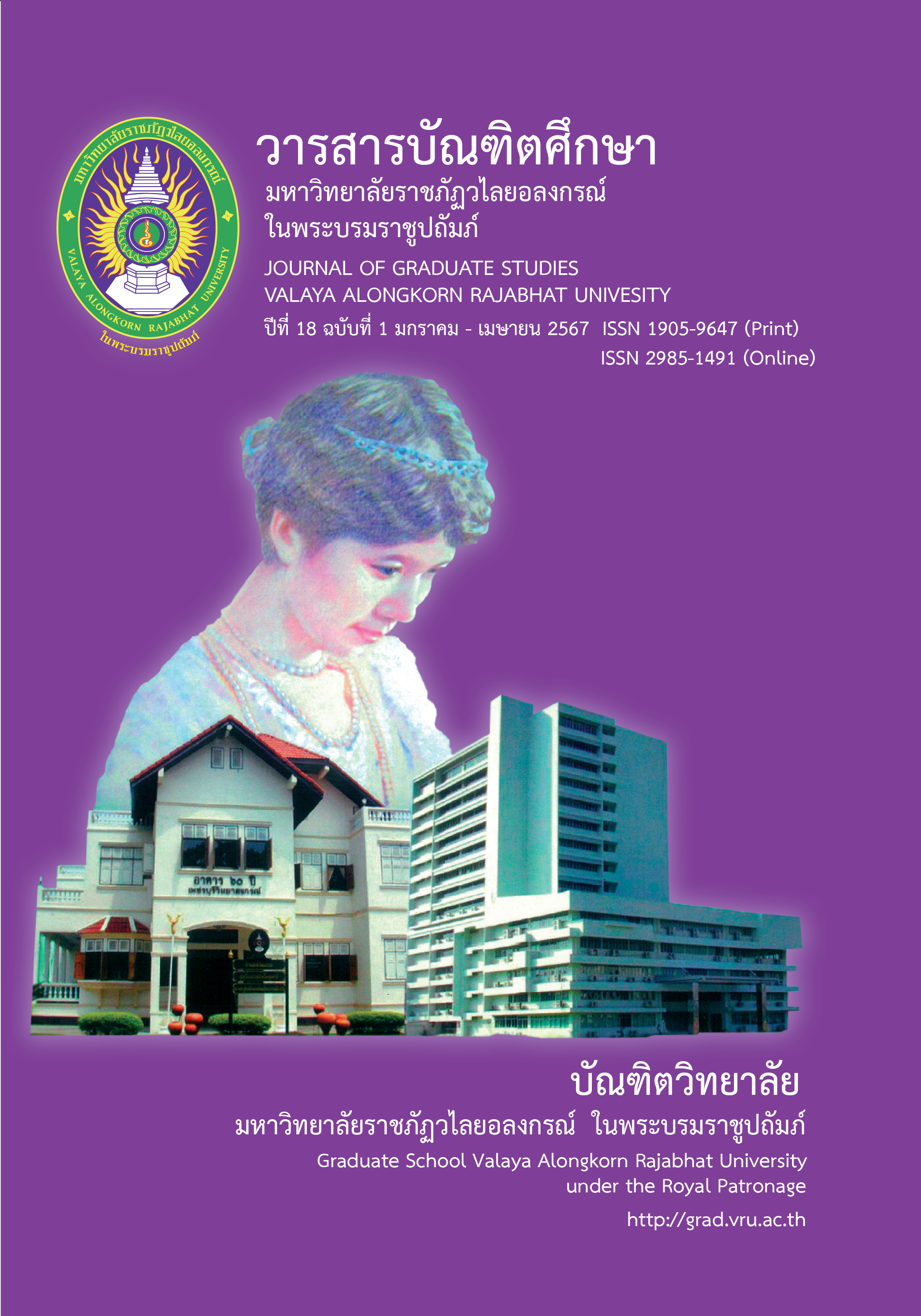ลักษณะร่วมของทฤษฎีโครงสร้างความรู้และทฤษฎีสหบท : แนวทางการจัดการเรียนรู้ในการอ่านตีความ
Main Article Content
บทคัดย่อ
บทความฉบับนี้มุ่งนำเสนอแนวทางการจัดการเรียนรู้เพื่อเสริมสร้างทักษะในการอ่านตีความ โดยนำทฤษฎีโครงสร้างความรู้ และทฤษฎีสหบท ซึ่งเป็นทฤษฎีการเรียนรู้ที่สนับสนุนการเรียนการสอนเพื่อพัฒนาทักษะการอ่าน กล่าวคือ ทฤษฎีโครงสร้างความรู้เป็นตัวแทนความรู้และประสบการณ์ของบุคคล มีความเชื่อมโยงกันในลักษณะเครือข่าย เมื่อผู้เรียนพบข้อมูลใหม่ จะสร้างความหมายและซึมซับไว้เป็นโครงสร้างใหม่ต่อไป ในขณะที่ทฤษฎีสหบทเป็นเครือข่ายของความสัมพันธ์ของตัวบทที่อ่านร่วมกันกับตัวบทอื่น ๆ ในบริบทสังคมและวัฒนธรรม ผู้เรียนสามารถอ่านความหมายได้ใหม่จากการพิจารณาความเชื่อมโยงระหว่างตัวบท และเชื่อมโยงกับรหัสทางวัฒนธรรม ลักษณะร่วมขององค์ประกอบในทั้ง 2 ทฤษฎี ได้แก่ รหัส โครงสร้าง ปฏิสัมพันธ์ระหว่างตัวบทกับผู้อ่าน และการตีความกับความสมบูรณ์ของเนื้อหา ผู้สอนสามารถนำมาปรับใช้ในการจัดการเรียนรู้ร่วมกันเพื่อตีความวรรณกรรมได้เป็นอย่างดี ผู้วิจัยได้เสนอรายละเอียดพื้นฐานของทฤษฎีทั้งสอง และแนวทางในการจัดการเรียนการสอนโดยบูรณาการจุดเด่นของทฤษฎีทั้งสองเข้าด้วยกัน แนวทางการจัดการเรียนการสอนดังกล่าวจะช่วยสร้างความเข้าใจบทอ่านของผู้เรียน โดยพิจารณาความสัมพันธ์กับตัวบทอื่นหรือบริบทของสังคม ทำให้เห็นความหมายแฝงต่าง ๆ ที่ลึกซึ้ง และผู้เรียนสามารถขยายองค์ความรู้จากบทอ่านได้มากขึ้น
Article Details

อนุญาตภายใต้เงื่อนไข Creative Commons Attribution-NonCommercial-NoDerivatives 4.0 International License.
บทความทุกเรื่องได้รับการตรวจความถูกต้องทางวิชาการโดยผู้ทรงคุณวุฒิ ทรรศนะและข้อคิดเห็นในบทความวารสารบัณฑิตศึกษา มหาวิทยาลัยราชภัฏวไลยอลงกรณ์ ในพระบรมราชูปถัมภ์ มิใช่เป็นทรรศนะและความคิดของผู้จัดทำจึงมิใช่ความรับผิดชอบของบัณฑิตวิทยาลัย มหาวิทยาลัยราชภัฏวไลยอลงกรณ์ ในพระบรมราชูปถัมภ์ กองบรรณาธิการไม่สงวนสิทธิ์การคัดลอก แต่ให้อ้างอิงแหล่งที่มา
เอกสารอ้างอิง
Akdal, D. & Şahin, A. (2014). The Effects of Intertextual Reading Approach on the Development of Creative Writing Skills. Eurasian Journal of Educational Research. 54, 171-186.
Alba, J. W. & Hasher, L. (1983) Is Memory Schematic? Psychological Bulletin. 93, 203–231.
Anderson, R. C. & Pearson, P. D. (1984). A Schema Theories View of Reading Comprehension. Longman.
Barlett, F. C. (1932). Remembering. Cambridge University Press.
Barthes, R. (1979). “From Work to Text” in Textual Strategies: Perspectives in Post-Strucalist Criticism. Cornell University Press.
Bloom, H. (1997). The Anxiety of Influence: The Theory of Poetry. Oxford University Press.
Choihiran, P. (2020). kānphatthanā rūpbǣpkānrīanrū phư̄a sāngsœ̄m khwāmsāmāt nai kānʻān tīkhwām khō̜ng naksưksā radap parinyā bandit dōI chai RUCES MODEL [The Development of Learning Model for Enhancing the Reading Ability of Undergraduate Students Using RUCES Model]. Doctoral dissertation, Silpakorn University.
Devine, T. G. (1986). Teaching Reading Comprehension from Theory to Practice. Allyn and Bacon.
Doyle, N. M. (1987). Schema Theory and the Teaching of Literature [Master’s thesis, University of Newfoundland]. ProQuest Dissertations and Theses Global.
Duangchuen, P. (2018). phū nam ʻongkō̜n nai lōk VUCA [Organizational leader in VUCA World]. Christian University Journal. 24, 450–458.
Flavell, J. H. (1963). The Development Psychology of Jean Piaget. D. Van Nostrand Company, Inc.
Makjui, A. (2010). kānphatthanā rūpbǣp kān rīan kānsō̜n tām thritsadī saha bot phư̄a sœ̄msāng khwāmsāmāt nai kān khīan phāsā Thai chœ̄ng sāngsan khō̜ng naksưksā radap parinyā bandit [Development of an Instructional Model based on Intertextuality Theory to Enhance Thai Creative Writing Ability of Undergraduate Students]. Doctoral dissertation, Chulalongkorn University. CUIR. http://cuir.car.chula.ac.th/handle/123456789/61210
Mandler, L. M. (1983). Structural Invariants in Development Reading. In L.S. Liben (ed), Piaget and the Foundations of Knowledge (pp. 97–113). Lawrence Erilbaum Associates, Inc.
Nodelman, P. (1996). Intertextuality Connections in Read-alouds of Information Books. Language Arts. 73(5), 72–84.
Office of the Basic Education Commission, Ministry of Education. (2011). nangsư̄ rīan rāiwichā phư̄nthān phāsā Thai wannakhadī wičhak namat yom sưksā pī thī sō̜ng [Textbook for basic Thai language courses secondary school year 2]. Office of the Basic Education Commission.
Office of the Basic Education Commission. (2018). nangsư̄ rīan rāiwichā phư̄nthān phāsā Thai wannakhadī wičhak namat yom sưksā pī thī hok [Textbook for basic Thai language courses secondary school year 6]. Office of the Welfare Promotion Commission for Teachers and Educational Personnel.
Office of the Royal Society. (2020). photčhanānukrom sap sưksā sāt rūamsamai chut khwām chalāt rū [The Dictionary of Contemporary Educational Vocaburary (Literacy)]. Office of the Royal Society.
Pantthakerngamorn, T. (1999). kānʻān tīkhwām [Reading for Interpretation]. Faculty of Humanities and Social Sciences, Songkhla Rajabhat Institute.
Patumasuti, S. (2010). khūmư̄ kā raʻā nakhit wikhro̜ [Read and Critical Thinking Manual]. Thung Sak Arsom.
Pittayapitak, T. (2010). kānphatthanā krabūankānrīankānsō̜n dōI būranakān thritsadī sahabot læ nǣokānsō̜nʻān dōi chai wannakam pen thān phư̄a sœ̄msāng khwāmsāmāt nai kānʻān chœ̄ng sāngsan khō̜ng dek ʻanubān [Development of Instructional Process Integrating Intertextuality Theory with a Literature-Based Approach to Enhance Creative Reading Ability of Kindergarteners]. Doctoral dissertation, Chulalongkorn University.
Prachakul, N. (2009). yō̜k ʻaksō̜n yō̜n khwāmkhit [Collection of Articles]. Read and Vibhasa.
Rumelhart, D. E. (1975). Notes on a Schema for Stories. In D. G. Brown & A. Collins (Eds.), Representation and Understanding: Studies in Cognitive Science. Academic Press.
Saengthong, P. (2012). Intertextuality čhāk tūa bot sū samphanthabot [Intertextuality from Text to Context]. Songklanakarin Journal of Social Sciences and Humanities. 3, 261–270.
Satthaphong, T. (2016). kānphatthanā rūpbǣpkānrīankānsō̜n tāmnǣokhit kānʻānčhāktonbǣp læ konlawithī phang samphan khō̜ng khwāmmāi phư̄a songsœ̄m khwāmsāmāt nai kānʻān chœ̄ng wikhro̜ khō̜ng nisit radap ʻudomsưksā [Development of an Instructional Model Based on Reading Apprenticeship Approach and Semantic Mapping Strategy for Enhancing Analytical Reading Ability of Undergraduate Students]. Doctoral dissertation, Chulalongkorn University.
Sommit, P. (2021). kānphatthanā thaksa kā raʻān tīkhwām wannakhadī Thai khō̜ng nakrīan radap matthayommasưksā pī thī nưng - hok dūai nawattakam botphlēng phō̜n ron mai nai wannakhadī Thai [Developing Reading Interpretation Skills in Thai Literature of Mathayomsuksa 1-6 Students with the Innovation of Plant Rhyme in Thai Literature]. Humanities and Social Sciences Journal of Pibulsongkram Rajabhat University. 15(1), 131–143.
Sornprasert, S. (2015). kānphatthanā rūpbǣp kān rīan kān sō̜ naʻā naphā sā ʻAngkrit tām thritsadī khrōngsāng khwāmrū læ nǣokhit kānsō̜n bǣp lǣkplīan botbāt rawāng khrū kap nakrīan phư̄a songsœ̄m khwāmsāmāt nai kā raʻā naphā sā ʻAngkrit khō̜ng nakrīan ra dap namat yom sưksā tō̜n plāi [Development of a Reading Instructional Model Based on Schema Theory and Reciprocal Teaching Approach to Enhance Reading Ability of Upper Secondary]. Doctoral dissertation, Chulalongkorn University. CUIR. http://doi.org/10.14457/CU.the.2015.1199
Suksawat Na Ayudhaya, T. (2005). Intertextuality as a Method of Literary Criticism. The Journal of Human Sciences. 6, 1–13.
Thongted, K. & Somnuk, S. (2023). phon khō̜ng kānchai withī sō̜n bǣp sip pā thī mī phon tō̜ khwām chalāt rū kā raʻān læ thaksa kānthamngān pen thīm khō̜ng nak rīan namat yom sưksā pī thī nưng rōngrīan khayāi ʻōkāt nai sangkat samnakngān khēt phư̄nthī kānsưksā prathom sưksā ʻĀng Thong [The Effect of Using CIPPA MODEL toward Reading Literacy and Teamwork Skill of Matthayomsuksa 1 Students Opportunity Expansion School under the Angthong Primary Educational Service]. Journal of Educational Innovation and Research. 7(1), 294–309.
Wongtip, K. (2016). kānphatthanā rūpbǣpkānrīankānsō̜n tām thritsadī wačhana patibatsāt phư̄a sœ̄msāng khwāmsāmāt nai kānʻān tīkhwām khō̜ng naksưksā radap parinyā bandit [Development of an Instructional Model Based on Pragmatics Theory to Enhance Interpretative Reading Ability of Undergraduate Students]. Doctoral dissertation, Silpakorn University.
Yantip, J. (2004). kānphatthanā krabūankān būranakān thaksa kān khit nai kānsō̜nʻān phāsā ʻAngkrit phư̄a khwāmkhaočhai kǣ nakrīan radap matthayomsưksā tō̜n ton tām thritsadī khrōngsāng khwāmrū læ mētākhō̜knichan [A Development of the Process of Integrating Thinking Skills in Teaching English Reading Comprehension to Lower Secondary School Students Based on Schema and Metacognition Theories]. Doctoral dissertation, Chulalongkorn University.


